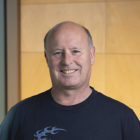Sidebar
Events Calendar
Space rocks and chaotic orbits: could Earth have a hidden companion?
Nothing could be more boring than a rock going round in orbit for millions of years, right? Well as usual, Ian begs to differ, and will take you on a quick tour of some of the features of orbits that you may not have come across before.
The elliptical orbit under the influence of gravity was solved theoretically by Isaac Newton in the 1600s, and his equations are usually used today, to calculate orbits of planets, moons, comets, near-Earth asteroids, and spacecraft. There are only two slight problems - firstly, the equations cannot actually be solved if there are more than two bodies involved (which is usually the case, eg. Earth-Moon-Spacecraft); and secondly the equations are actually incorrect anyway because they don't include time dilation due to velocity and gravity. The only way to understand orbits long term is to use supercomputer modelling.
In this talk we will quickly run through some of the consequences of the 'three body problem' and the limitations of Newton's model of gravity. Orbit swaps, drastic variations in Earth's orbit round the Sun, and the underlying chaotic nature of orbits in general. The fact that all orbits are inherently unstable opens up an interesting question.... could another body share Earth's orbit? If so, how could it get there? And if not, why not? Ian will outline some original research into whether there might be something very interesting lurking at one of the Earth-Sun Lagrange points.
As a finale we will look at orbits in the framework of general relativity - and find out if this makes things easier, or harder to understand.
 Dr Ian Kemp
Dr Ian Kemp
Astonomer at ICRAR - International Centre for Radio Astronomy Research
I started my working life in the UK steel industry. After gaining a 1st class honours degree and PhD in Metallurgy at the University of Leeds, I pursued an academic career initially at the University of Wales, then at the BHP Melbourne Research Laboratories in Melbourne, Victoria. During this period I achieved a number of Journal publications and Conference Presentations in the field. I later moved into more applied work in Steel Processing, Data Management and Technology Deployment, in industries including Steel manufacture, government, and Oil & Gas. The latter included two years in the Pilbara (NW Australia) managing a range of process improvement projects. In my later career my focus was on Project Management though I maintained a technical focus and was awarded a patent relevant to reducing the environmental impact of offshore operations.
Through all this time I maintained an interest in astronomy, and gained a Graduate Diploma and Masters Degree in Astronomy from Swinburne University (Victoria) by distance learning.
I recently joined ICRAR as a full time researcher after many years as an enthusiastic amateur astronomer. I am pursuing a number of smaller projects as I discover where my main research interests lie. A couple of my research areas are extensions to short projects carried out for my Masters Degree in Astronomy.
DATA INTENSIVE ASTRONOMY
Developing standardised data flows to process the large flow of data from the new FAST radio astronomy dish in Southwest China.
CATACLYSMIC VARIABLE STARS
I am studying a type of variable star known as UGSU, which consists of a binary system in which a medium-sized red star orbits a more massive white dwarf. These are the precursor systems to the ‘type 1a supernovae’, which are very important phenomena in Astronomy In these systems the red companion spills matter onto the white dwarf, creating an accretion disk. From time to time the disk becomes gravitationally unstable and collapsed onto the WD, causing the system to brighten by a factor of 10,000 or so. By studying the light emitted during this collapse we can learn about the behaviour and possible ultimate destruction of the system.
EARTH’S TROJAN POINTS
It is possible for asteroids, rocks, and dust to share Earth’s orbit, if they can become bound to one of the ‘Lagrange Points’ which sit ahead of and behind Earth in its orbit. My work based on dynamical modelling using the Swinburne supercomputer has established the criteria for large objects to maintain a stable ‘tadpole’ or ‘horseshoe’ orbit as a partner of Earth. I am extending this work to look at the possibility of primordial gas and dust being retained – for these small particles the models need to include the effects of radiation pressure and light drag.
EVOLUTION OF ‘GREEN VALLEY’ GALAXIES
I am investigating the evolution of galaxies as they transition from the blue cloud to the red sequence (if in fact they do transition!) – specifically looking for correlations with the gas content of the galaxies. This work is under the direction of Ivy Wong and Barbara Catinella at ICRAR.
